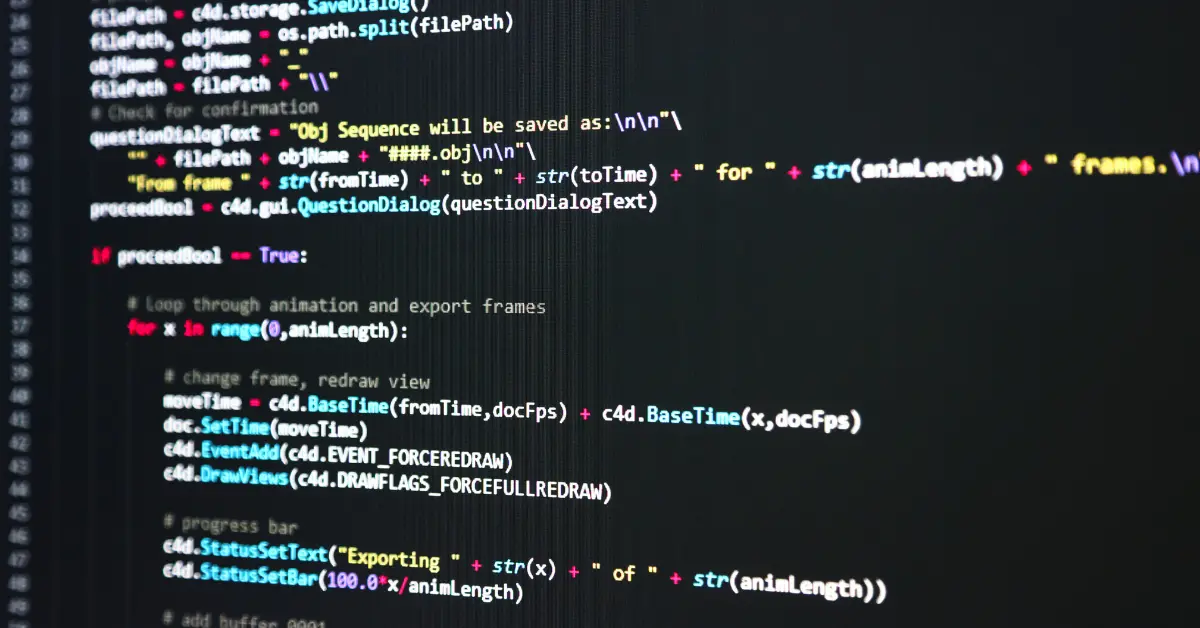Software development is a rapidly growing and in-demand field in today’s digital age. From mobile apps to web design, software is becoming increasingly essential in every aspect of our daily lives. To develop these software applications, developers use specific programming languages instrumental in designing, building, and implementing the code that drives these programs.
Programming languages are sets of instructions used to communicate with computers, allowing for the creation of complex and functional software. Each language has its specific rules and syntax, making them unique. When it comes to
software development, there is no one-size-fits-all solution. Different projects and applications require different languages, and choosing the right one is critical in achieving the desired outcome.
Programming Languages for Software Development
Here, we will explore eight programming languages commonly used in software development. Each language has its strengths and weaknesses, and understanding these differences can help you determine which one to use based on your needs and project requirements.
1. Java
Java is one of the most popular programming languages, with an estimated 9 million developers worldwide. Created by James Gosling at Sun Microsystems in 1991, Java’s original purpose was to build interactive television systems. However, it has since evolved into one of the primary languages for software development.
One of the reasons for Java’s popularity is its platform independence. This means that Java code can run on any platform with a Java Virtual Machine (JVM), making it a cross-platform language and highly versatile. It is also known for its security features, making it a preferred language for building secure applications such as banking and e-commerce.
Java is an object-oriented language organized around objects rather than actions and data. This makes it easy to maintain and modify, especially for larger and more complex projects. It also has a vast library of pre-written code called “packages,” which developers can use to reduce coding time and focus on solving the task.
However, Java is not a beginner-friendly language, and its learning curve can be steep for those new to programming. It also requires significant memory, making it slower and less efficient for small and simple projects.

2. Python
Python is another widely used programming language known for its simplicity and readability. Developed by Guido van Rossum in the 1980s, Python emphasizes code readability, making it an ideal language for beginners. Its concise and intuitive syntax makes it easier to learn and use than other languages.
Python is a high-level language, meaning it is closer to human language than machine code. This makes it easier to translate and understand, decreasing the chances of errors in the code. It also has a robust library of open-source packages, making it a favorite among developers for web development, data analysis, and artificial intelligence.
One of the drawbacks of Python is its lack of strict typing, which can cause some confusion for developers as the language does not enforce specific data types. It is also slower than other languages like Java, making it unsuitable for building high-performance applications or games.

3. C++
C++ is a general-purpose language that is a powerful extension of the C language. Developed in the 1980s by Bjarne Stroustrup, C++ was created to be an efficient and flexible language for building complex and large-scale applications. It is widely used in the software industry, from operating systems to game development.
One of the main advantages of C++ is its ability to directly control low-level activities, memory, and hardware. This makes it a preferred language for developing software and systems that require high performance and speed. It also has a vast array of libraries, making it easy to extend its functionality and use it for a wide range of applications.
However, C++ is not a beginner-friendly language and has a steep learning curve. It also has complex syntax and can be more challenging to debug, making it less suitable for small projects.

4. JavaScript
JavaScript is a popular scripting language for creating interactive and dynamic web pages. Developed by Brendan Eich in 1995, it is often used alongside HTML and CSS to create website animations, user interfaces, and responsive design. With the rise of web development, JavaScript has become one of the most sought-after programming languages in the market.
What sets JavaScript apart from other languages is that it is an interpreted language, meaning it does not require compilation before execution. This makes it lightweight and versatile, enabling developers to use it for various applications, from front-end development to building server-side applications using Node.js.
One of the downsides of JavaScript is that it is loosely typed, which means it can be challenging to trace errors and bugs in the code. It also has security vulnerabilities, making it prone to cyber-attacks. However, these risks can be mitigated with proper coding practices and security protocols.

5. Swift
Swift is a relatively new, open-source programming language developed by Apple in 2014. It was created to replace Objective-C as the primary language for developing iOS and macOS applications. Since then, it has gained significant popularity among developers building apps for Apple’s platforms.
One of the advantages of Swift is its simplicity. Its syntax is similar to other popular languages like Python and JavaScript, making it easier to learn and use. Swift is also known for its speed and performance, making it ideal for building mobile applications and games.
However, one of the downsides of Swift is its compatibility. It is primarily designed for building iOS and macOS applications, which limits its use for other platforms. It is also a relatively new language, so the community and available resources are less extensive than other established languages.
6. PHP
PHP (Hypertext Preprocessor) is a server-side scripting language for developing dynamic web pages and applications. It is widely used for popular websites like Facebook, WordPress, and Wikipedia. Developed in 1995 by Rasmus Lerdorf, PHP has evolved into a versatile language with a robust library and a large community of developers.
One of the main advantages of PHP is its integration with databases, making it a powerful tool for creating complex web applications. It is also relatively easy to learn, similar to C language, and has excellent documentation for beginners. It is also an open-source language, meaning that it is free to use and has a vast library of third-party tools and resources.
However, PHP is not without its flaws. One of its main criticisms is its security vulnerabilities, as one small mistake in the code can lead to critical security breaches. It is also not as efficient as other languages in speed, so it may not be suitable for high-performance applications.

7. Ruby
Ruby is a dynamic, reflective, object-oriented programming language created in 1995 by Yukihiro Matsumoto. It is popularized in web development by the Ruby on Rails framework, which is used to build websites and web applications. Ruby emphasizes simplicity and productivity, making it a favorite among startups and small businesses.
Ruby is known for its elegant and human-readable syntax, making it easy to understand and maintain code. It also has a vast community of developers and a strong open-source community, making it easy to find resources and support. Additionally, Ruby on Rails has a built-in web server, database integration, and libraries, making it quicker to start
building web applications.
One of the downsides of Ruby is its relatively slower speed, making it less suitable for applications that require high performance. It also has a smaller user base than other languages, making finding experienced Ruby developers for larger projects challenging.
8. Rust
Rust is a relatively new, open-source systems programming language first introduced in 2010 by Mozilla Research. It was designed to be fast, safe, and concurrent, making it ideal for developing high-performance software. Rust has gained significant popularity recently due to its unique features and applications.
One of the main strengths of Rust is its memory safety and performance. The language uses a strict borrowing system that prevents unpredictable behavior and crashes, making it more reliable and secure than other languages. It is also highly efficient and can be used in applications where performance is critical, such as operating systems or game development.
However, Rust has a steep learning curve, and its strict rules and syntax can be challenging for beginners to grasp. It also has a smaller community than more established languages, making it harder for beginners to find resources and support.
FAQs
Q: Which programming language is best for beginners?
A: Some of the easiest programming languages for beginners include Python, JavaScript, and Java.
Q: Which programming language is best for developing mobile applications?
A: Swift is the primary language used to develop iOS applications, while Java is commonly used for Android app development.
Q: Is it necessary to learn multiple programming languages?
A: It depends on your career goals and the projects you want to work on. Learning different languages can broaden your skills and make you more versatile as a developer.
Q: Which programming language is best for web development?
A: JavaScript is the primary language for front-end web development, while Python and PHP are commonly used for server-side programming.
Q: What are some essential factors when choosing a programming language?
A: The factors to consider include the type of project, your experience and skill level, the availability of resources and support, and the language’s compatibility with other technologies.







